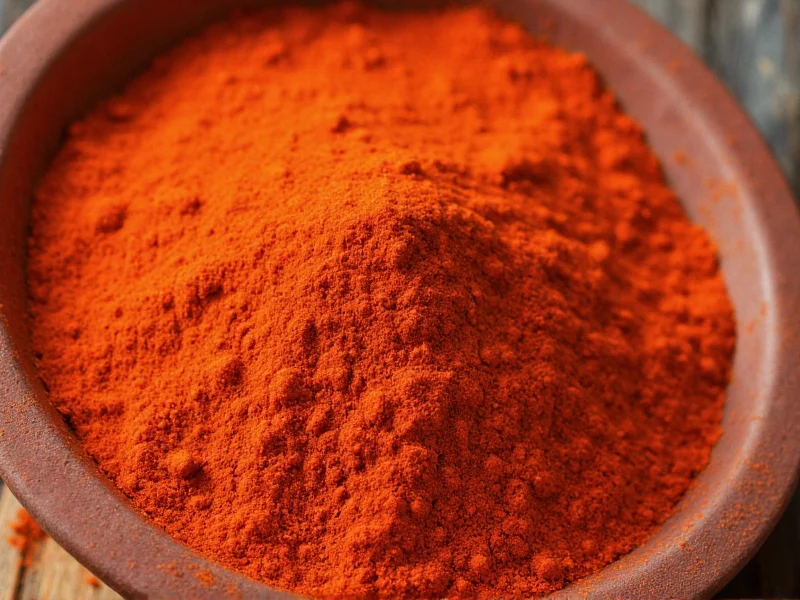Dulce paprika, also known as sweet paprika or Spanish paprika, represents one of the most versatile and widely used spice varieties in global cuisine. This vibrant red powder delivers the characteristic paprika color and flavor without any significant heat, making it accessible to all palates. Understanding dulce paprika's unique properties helps home cooks and professional chefs alike elevate their culinary creations with authentic Spanish flavor.
What Makes Dulce Paprika Special
The term "dulce" means sweet in Spanish, perfectly describing this paprika's defining characteristic. Unlike its spicy counterparts, dulce paprika comes from sweet red peppers that undergo a specific drying and grinding process. The peppers used for dulce paprika contain minimal capsaicin, the compound responsible for heat in chili peppers, resulting in a Scoville rating of 0-500 units—comparable to bell peppers.
Traditional Spanish dulce paprika often undergoes a unique smoking process over oak wood fires, particularly in the La Vera region of Spain where protected designation of origin (PDO) regulations govern production. This smoking imparts a subtle smokiness that enhances its sweet profile without adding heat.
Dulce Paprika vs. Other Paprika Varieties
| Paprika Type | Heat Level (SHU) | Flavor Profile | Primary Origin | Best Culinary Uses |
|---|---|---|---|---|
| Dulce (Sweet) | 0-500 | Sweet, mild, sometimes smoky | Spain | Chicken paprikash, deviled eggs, potato salad, marinades |
| Bitter (Agridulce) | 500-1,000 | Mildly sweet with slight bitterness | Spain | Stews, braises, meat rubs |
| Picante (Hot) | 5,000-10,000 | Spicy, pungent | Spain/Hungary | Chili, spicy sausages, hot sauces |
| Hungarian Sweet | 0-500 | Fruity, earthy | Hungary | Traditional goulash, Hungarian dishes |
Culinary Applications of Dulce Paprika
Dulce paprika shines in dishes where color and mild flavor enhancement are desired without heat. Professional chefs value dulce paprika for its ability to add visual appeal while subtly enhancing flavor profiles. When cooking with dulce paprika, remember that heat degrades its delicate flavor compounds, so adding it toward the end of cooking preserves its distinctive characteristics.
Traditional Spanish dishes featuring dulce paprika include:
- Pimientos de Padrón - Often finished with a dusting of dulce paprika
- Patatas Bravas - The sauce frequently incorporates dulce paprika
- Chorizo - Sweet Spanish chorizo uses dulce paprika as a primary seasoning
- Paella - Many regional variations include dulce paprika for color and flavor
International applications have expanded dulce paprika's reach beyond Spanish cuisine. It works beautifully in:
- Deviled eggs (the classic American preparation)
- Smoked paprika aioli for seafood
- Roasted vegetable seasoning
- Marinades for chicken and pork
- Enhancing tomato-based sauces without adding heat
Substituting Dulce Paprika
When dulce paprika isn't available, several alternatives can work depending on your specific needs. For authentic Spanish recipes, finding a suitable substitute requires understanding what aspect of dulce paprika you're trying to replicate—color, sweetness, or smokiness.
Best substitution options include:
- Sweet Hungarian paprika - Similar sweetness but lacks Spanish smokiness
- Smoked paprika (mild) - Provides smokiness but may have slightly different pepper base
- Red bell pepper powder - Closest heat level but less complex flavor
- Combination approach - Mix sweet paprika with a tiny pinch of cayenne for depth
When substituting in recipes calling for Spanish dulce paprika, remember that the unique smoking process over oak fires in Spain creates a distinctive flavor profile that's difficult to replicate exactly with substitutes.
Storage and Quality Considerations
Like all ground spices, dulce paprika loses potency over time. For optimal flavor, store dulce paprika in an airtight container away from light and heat. Properly stored, it maintains peak quality for 6-12 months. Signs of degraded paprika include faded color (should be vibrant red) and diminished aroma.
When purchasing dulce paprika, look for:
- Clear labeling indicating "dulce" or "sweet"
- Origin information (Spanish paprika often specifies La Vera region)
- Harvest or production date when available
- Vibrant red color (dull color indicates age)
- Strong, sweet aroma when opened
Authentic Spanish dulce paprika often carries a protected designation of origin (PDO) label, guaranteeing its production according to traditional methods in specific Spanish regions. While more expensive than generic paprika, the quality difference is noticeable in finished dishes.
Exploring Dulce Paprika in Modern Cuisine
Contemporary chefs continue finding innovative applications for dulce paprika beyond traditional uses. Its sweet, non-spicy profile makes it ideal for:
- Infusing oils for salad dressings
- Adding color to baked goods like red velvet cake
- Enhancing fruit-based salsas and chutneys
- Creating visually striking rimming for cocktail glasses
- Adding depth to chocolate-based desserts
Food scientists note that dulce paprika contains high levels of carotenoids, natural pigments that provide both its vibrant color and antioxidant properties. Unlike hot paprika varieties, dulce paprika's carotenoid profile emphasizes capsanthin and capsorubin, which contribute to its deep red hue without the heat-inducing capsaicinoids.











 浙公网安备
33010002000092号
浙公网安备
33010002000092号 浙B2-20120091-4
浙B2-20120091-4